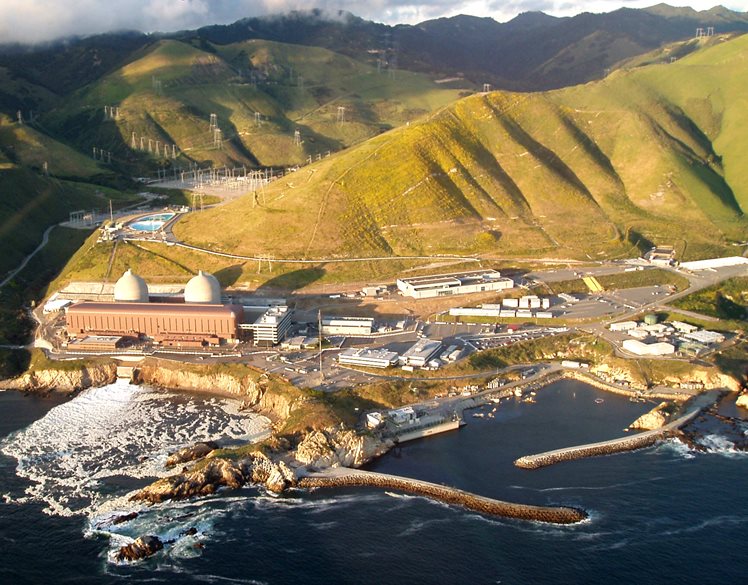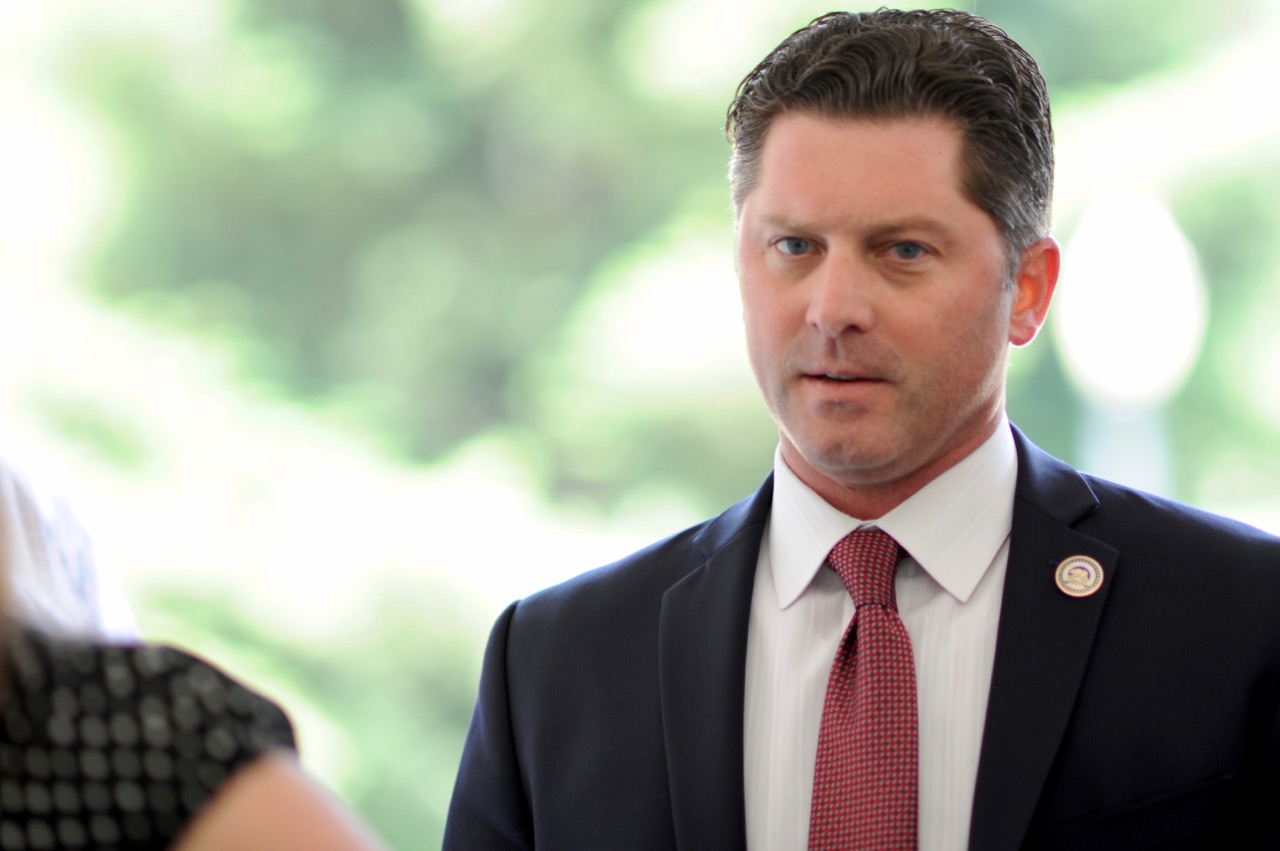
Diablo Canyon Nuclear Power Plant. (Photo: slocounty.ca.gov)
Ringside View: The Case for Nuclear Power
California was once home to six nuclear power plants, generating a total of 5.8 gigawatts
By Edward Ring, November 30, 2023 2:55 am
 There are solutions to energy, water and infrastructure challenges that make compelling economic and environmental sense even if there was no climate crisis. But for those policymakers and influencers who believe we face an existential threat for which the only appropriate way to cope is to achieve “net zero,” these solutions ought to be even more compelling.
There are solutions to energy, water and infrastructure challenges that make compelling economic and environmental sense even if there was no climate crisis. But for those policymakers and influencers who believe we face an existential threat for which the only appropriate way to cope is to achieve “net zero,” these solutions ought to be even more compelling.
Mass timber is a perfect example — to make it, you can harvest smaller trees and leave older growth alone, thin overgrown forests, sequester carbon in the finished product, and replace reinforced concrete as a building material. Water projects that improve our capacity to manage runoff from “bomb cyclones” and store more water from unusually wet years to guarantee a supply during unusually dry years is another example. But greatest opportunity to meet California’s energy challenges while also achieving the goal of net zero is with nuclear power.
Consider the tradeoff between two zero emission solutions: Diablo Canyon vs. the offshore wind farms proposed off the coast of San Luis Obispo and Humboldt counties. Diablo Canyon generates 2.2 gigawatts with a 90 percent uptime, i.e., it produces 2 gigawatt-years of electricity per year, nearly 10 percent of California’s entire in-state generating capacity. To generate an equivalent amount of electricity using 10 megawatt wind turbines, each one of them longer (vertically) than a supercarrier, floating 20 miles offshore, you would need at least 500 of them. This is an astonishing fact.
The cost of nuclear power plants is often cited as a reason not to build more of them. But some of that expense is avoidable. A report published in 2020 by Ars Technica acknowledges the role that litigation and bureaucratic obstacles play in elevating the cost of nuclear power, although it claims they only account for one-third of the overruns. The other source of increased costs? To quote the author: “the largest increases were indirect costs: engineering, purchasing, planning, scheduling, supervision, and other factors not directly associated with the process of building the plant,” and “about a quarter of the unproductive labor time came because the workers were waiting for either tools or materials to become available. In a lot of other cases, construction procedures were changed in the middle of the build, leading to confusion and delays. All told, problems that reduced the construction efficiency contributed nearly 70 percent to the increased costs.”
Even at these elevated costs, however, nuclear power is economically competitive with renewables. When comparing the cost of nuclear power to wind and solar power, a peer-reviewed paper, published by Science Direct last year, analyzed the difference between the traditional Levelized Cost of Electricity analysis and the more recently introduced, and more accurate, Levelized Full System Cost of Electricity. The study identified the lowest full system cost for renewables in the U.S., the blend of wind and solar on the Texas grid. By mixing input from both of these intermittent sources of electricity, the required storage capacity is minimized since solar and wind produce power at different times of day. Even in this case, when including the cost of storage and new transmission lines, nuclear power was found to be half as expensive as these renewables. No accurate evaluation of energy costs can fail to take into account full system costs, which are inherently greater when, for example, you must install a high voltage transmission line to connect a ten megawatt wind turbine, floating in 4,000 feet of ocean, 20 miles offshore, to land based battery farms and the grid.
California was once home to six nuclear power plants, generating a total of 5.8 gigawatts. Three of them, Humboldt Bay, Vallecitos, and Santa Susana, were small-scale, generating barely 100 megawatts in total. But San Onofre, with three reactors that could have been retrofit, took its 2.6 gigawatts offline in 2012. The other big plant was Rancho Seco in the Sacramento Valley, generating 913 megawatts until it was taken offline in 1989. Now, instead of building more nuclear power plants, California’s last operating reactors at Diablo Canyon are scheduled for shutdown. In the face of hyperbolic opposition, PG&E has applied to renew its license for another 20 years.
But what about the waste! Can nuclear power ever be completely safe? This article from 2019 offers a useful summary of how France has managed nuclear power, which provides over 70 percent of that nation’s electricity. In particular, it is worth noting the success the French have had recycling spent fuel, which enables a more efficient and secure supply of fuel and reduced radioactive waste. Every form of power generation carries with it an assortment of safety risks and environmental impact. To belabor the question — because it is appallingly obvious a fraud of historic proportions is sleepwalking to fruition – why are environmentalists obsessed with eliminating oil, gas, and nuclear power, while ignoring the aquatic and avian slaughter and squandered billions that are coming to California with offshore wind?
So how can we bring more nuclear energy to California, a state that, after all, is the global epicenter of climate crisis madness? Last year, writing for Quillette, Robert Zubrin, a nuclear engineer and author of the book “The Case for Nukes,” wrote a three-part series on clean energy with a focus on the nuclear option. This third installment provides an overview and makes specific recommendations in the areas of regulatory reform, the licensing process, waste disposal, and progress and priorities in research and development. In terms of advancing the technology, he writes “Breeder reactors could multiply our nuclear fuel resources a hundredfold. Small modular reactors could open up new markets unsuited to large pressurized water reactors and potentially make reactors much cheaper by enabling mass production in factories. High-temperature gas-cooled reactors and molten salt thorium reactors both hold great promise. New types of fission reactors for space applications are needed. The promise of thermonuclear fusion needs to be explored and developed.”
If California’s state legislature and governor are not merely serious, but also smart about how to deliver abundant “net-zero” energy, they need to fast-track nuclear with the same zealotry that they’ve applied to wind and solar.
- Ringside: The Potential of Waste-to-Energy in California - April 17, 2024
- Ringside: How Much Water Will $30 Billion Buy? - April 10, 2024
- Ringside: Sacramento’s War on Water and Energy - April 4, 2024





Climate Fetish — An urban myth is a fictional tale or conspiracy theory that circulates widely, is told and retold and presumed true by mere repetition. Urban myths are spread and illuminated in mass media, and become part of popular culture. Urban myths circulate from no singular source and can survive as fearmongering news items. Myth-making eco-propagandists have become mainstream news media assets. Urban myths can be dangerous propaganda that causes civic alarm and paranoia often for nefarious political advantage. Examples are the global Y2K internet collapse, white privilege, Russian collusion, World War III and endless doomsday scenarios. For over a half century, environmentalists have menaced us with fear-mongering scenarios of man-made ecological apocalypse. The environmental movement is the most densely-organized movement in human history. There are over 15,000 environmental nonprofits in the U.S. Having run out of green campaign grievances for their tax-exempt fundraising, radical eco-groups have come up with the most fantastic, intractable and theoretical problem of all – controlling dynamic, natural global climate variabilities (atmospheric thermodynamic radiative forcing). In scapegoating climate change for every inexplicable natural phenomenon and natural disaster, green-government tyranny would subvert capitalism itself with “climate austerity.” Partisan green-government regulations inflate the costs of goods, services, activities, food, and energies.
Watch Europe & Germany in particular. While all the talk recently has been about shutting down their Nuclear Power plants. After the next change in power of their government they will pursue energy independence with Nuclear playing a big part. While in Munich this summer we saw a pro nuclear power rally taking place at a large outdoor mall near the Central Station. It seemed to be well received. While attending Cal Poly in San Luis Obispo back in the early 80’s I recall while being on the beach near Diablo Canyon power plant for a bon fire there was a demonstration taking place over the power plant. I recall thinking that the protestors were misguided. Unfortunately, I’m sure that several of those “protestors” are now in places of power still trying to close down Diablo Canyon. 40 plus years later direct evidence shows that they are still misguided.
As Robert Zubrin says in Part I of this series
“The environmentalists hate nuclear energy because it would solve a problem they need to have.”